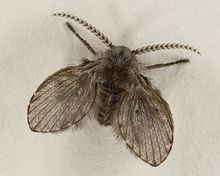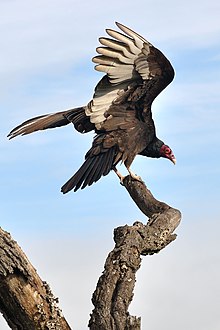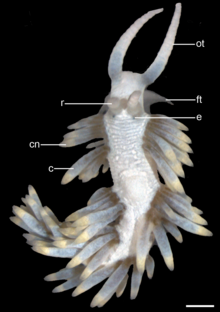Brood parasites are organisms that rely on others to raise their young. The strategy appears among birds, insects and fish. The brood parasite manipulates a host, either of the same or of another species, to raise its young as if it were its own, using brood mimicry, for example by having eggs that resemble the host's (egg mimicry).
Brood parasitism relieves the parasitic parents from the investment of rearing young or building nests for the young, enabling them to spend more time on other activities such as foraging and producing further offspring. Bird parasite species mitigate the risk of egg loss by distributing eggs amongst a number of different hosts.[1] As this behaviour damages the host, it often results in an evolutionary arms race between parasite and host as the pair of species coevolve.[2][3]
The strength of defenses and counter-adaptation rely on the host/parasitic species' ability to evolve; some host species have very strong rejection defenses resulting in the parasitic species evolving to have very close mimicry. In other species, hosts do not show rejection defenses and as a result, the parasitic species will show no evolved trait (example: egg mimicry).[4]
https://en.wikipedia.org/wiki/Brood_parasite
Psychodidae, called drain flies, sink flies, filter flies,[1] sewer flies, or sewer gnats, is a family of true flies. Some genera have short, hairy bodies and wings giving them a "furry" moth-like appearance, hence one of their common names, moth flies.[1] Members of the sub-family Phlebotominae which are hematophagous (feed on blood) may be called sand flies in some countries, although this term is also used for other unrelated flies.
There are more than 2,600 described species worldwide, most of them native to the humid tropics. This makes them one of the most diverse families of their order.[2] Drain flies sometimes inhabit plumbing drains and sewage systems, where they are harmless, but may be a persistent annoyance.[3]
| Psychodidae | |
|---|---|
 | |
| Male Clogmia albipunctata. A moth-like dense coat of small hairs gives rise to the term "moth fly". |
https://en.wikipedia.org/wiki/Psychodidae
Kleptoparasitism[a] (etymologically, parasitism by theft) is a form of feeding in which one animal takes prey or other food that was caught, collected, or otherwise prepared by another animal, including stored food. Examples of this last case include cuckoo bees, which lay their eggs on the pollen masses made by other bees, or the hosts of parasitic or parasitoid wasps. The term is also used to describe the stealing of nest material or other inanimate objects from one animal by another.
https://en.wikipedia.org/wiki/Kleptoparasitism
Kleptopredation is a form of feeding in which a predator eats prey after the prey has hunted, consuming both the prey and its recent meal.[1] It is a specific type of kleptoparasitism. The term was first used in an article published in the journal Biology Letters.
Kleptopredation has been observed in nudibranchs, who may target hydroid polyps that have recently eaten zooplankton.[2]
https://en.wikipedia.org/wiki/Kleptopredation
Zooplankton (/ˈzoʊ.əˌplæŋktən, ˈzuː(ə)-, ˈzoʊoʊ-/;[1] /ˌzoʊ.əˈplæŋktən,-tɒn/)[2] are heterotrophic (sometimes detritivorous) plankton (cf. phytoplankton). Plankton are organisms drifting in oceans, seas, and bodies of fresh water. The word zooplankton is derived from the Greekzoon (ζῴον), meaning "animal", and planktos (πλαγκτός), meaning "wanderer" or "drifter".[3] Individual zooplankton are usually microscopic, but some (such as jellyfish) are larger and visible to the naked eye.
https://en.wikipedia.org/wiki/Zooplankton
Hydrozoa (hydrozoans, from ancient Greek ὕδωρ, hydōr, "water" and ζῷον, zōion, "animal") are a taxonomic class of individually very small, predatory animals, some solitary and some colonial, most living in salt water. The colonies of the colonial species can be large, and in some cases the specialized individual animals cannot survive outside the colony. A few genera within this class live in fresh water. Hydrozoans are related to jellyfishand corals and belong to the phylum Cnidaria.
Some examples of hydrozoans are the freshwater jelly (Craspedacusta sowerbyi), freshwater polyps (Hydra), Obelia, Portuguese man o' war (Physalia physalis), chondrophores (Porpitidae), "air fern" (Sertularia argentea), and pink-hearted hydroids (Tubularia).
| Hydrozoa | |
|---|---|
 | |
| Siphonophorae |
https://en.wikipedia.org/wiki/Hydrozoa
https://en.wikipedia.org/wiki/Nudibranch
The turkey vulture (Cathartes aura), also known in some North American regions as the turkey buzzard (or just buzzard), and in some areas of the Caribbean as the John crow or carrion crow,[2] is the most widespread of the New World vultures.[3] One of three species in the genus Cathartes of the family Cathartidae, the turkey vulture ranges from southern Canada to the southernmost tip of South America. It inhabits a variety of open and semi-open areas, including subtropical forests, shrublands, pastures, and deserts.[1]
| Turkey vulture | |
|---|---|
 | |
| At Santa Teresa County Park, San Jose, California, US |
https://en.wikipedia.org/wiki/Turkey_vulture
Leucochloridium is a genus of parasitic trematode worms in the order Diplostomida. It Is the sole genus in the family Leucochloridiidae.[2] Members of this genus cause pulsating swellings in the eye-stalks of snails (a phenomenon colloquially called a zombie snail), so as to attract the attention of predatory birds required in the parasites' lifecycle.
| Leucochloridium | |
|---|---|
 | |
| Leucochloridium paradoxum |
https://en.wikipedia.org/wiki/Leucochloridium
https://en.wikipedia.org/wiki/Józef_Mehoffer



No comments:
Post a Comment